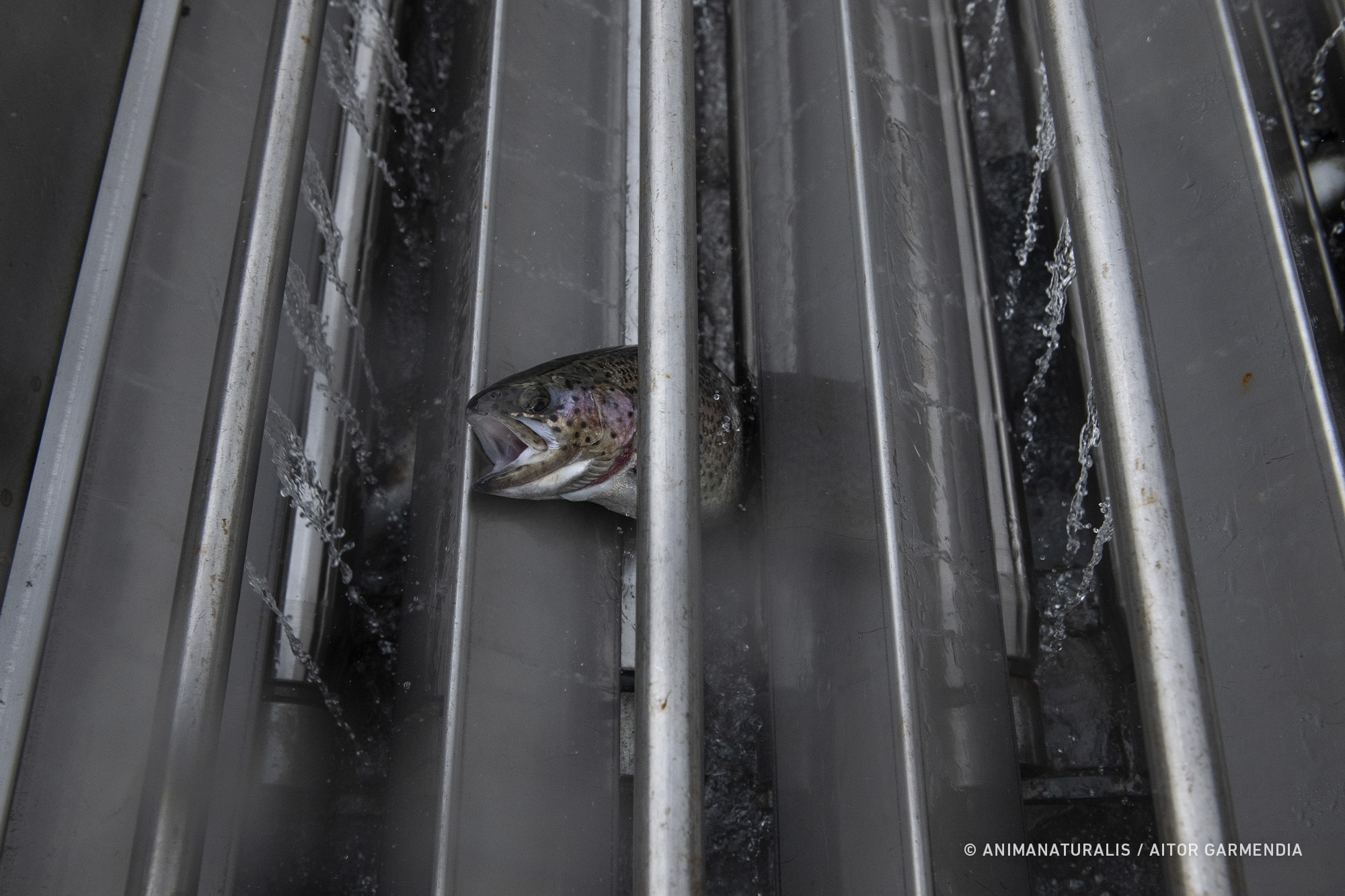Fish Sorting in the Industry

In industrial fish farms, we have observed that trout and other fish are sorted by size through mechanized processes that are highly stressful. One common method uses automatic sorting machines with suction tubes. These devices rapidly vacuum fish to transfer them into different compartments based on size.
This process is particularly traumatic for trout, involving rough and repeated handling that causes injuries like bruising, fin damage, or scale loss. The sudden suction and abrupt environmental change also elevate cortisol levels – a stress hormone – negatively impacting fish health.
In smaller farms, manual or automatic nets are used for sorting. When captured, fish often become entangled, suffering skin and scale wounds from friction. During this process, fish may be exposed to air for several minutes, causing suffocation and extreme disorientation.
Studies indicate fish shouldn't remain out of water for over 15 seconds without anesthesia. When exposed to air, their gills cannot effectively exchange oxygen, causing significant suffering. Careless handling also leads to falls that may cause severe trauma, internal fractures, or death.
This violent handling reflects fish farms' efficiency priorities: rapidly sorting large quantities while minimizing costs, treating animals as mere products without welfare considerations.
Sources:
- Fundación Franz Weber. (n.d.). Fish Farms: The Other Factory Farms.
https://www.piscifactorias.org/ - HSA, 2005. Humane harvesting of salmon and trout: Guidance notes No. 5. Humane Slaughter Association, UK.
